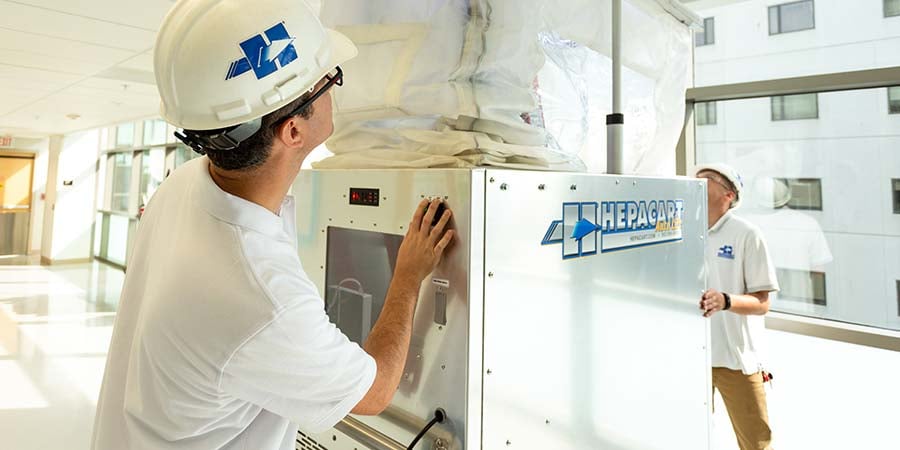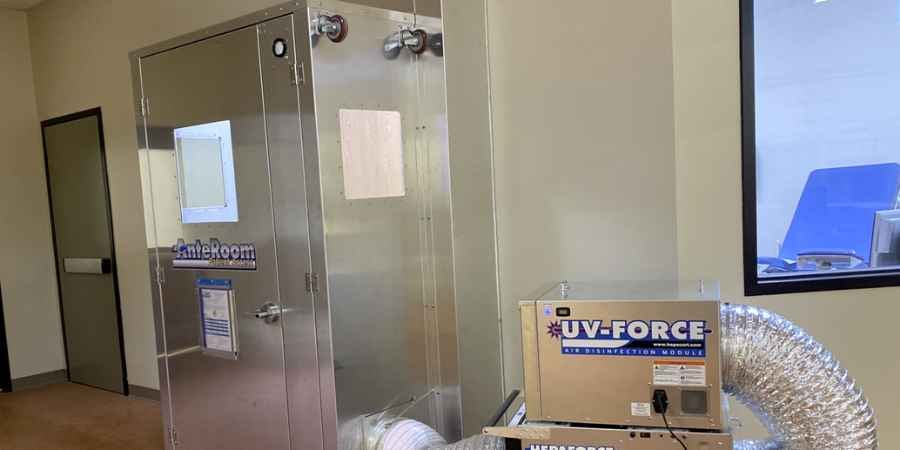Share this
Best Practices During Healthcare Construction: Raise the Bar on Safety
by HEPACART on May 02, 2023
.png?width=900&height=450&name=Untitled%20design%20(12).png)
During any type of construction, the safety of your patients should be the top priority. With increased dust and debris, construction can result in significant health problems for patients. Protecting those within your facility can be daunting, but it is crucial. As the safety standards for medical facilities have become more complex, you and your staff must understand the requirements for infection control. To improve your facility, educate yourself on patient safety. Let’s look at how your facility can raise the bar on managing construction dust.
Get a Grasp on Patient Safety
At any healthcare facility, some immunocompromised patients can be at greater risk when exposed to dust. Healthcare construction may be necessary, but you must follow every safety precaution closely before you begin. There may need to be more than just maintaining your regular cleaning routine to disinfect the area thoroughly. Depending on the level of construction, a vast amount of dust could be produced, making it difficult to contain all of it in one place. As the dust infiltrates the air, it can travel throughout the facility, exposing patients and creating poor indoor air quality. Maintaining dust and debris will help the construction process go smoother and decrease patient health risks.
ICRA’s Role in Healthcare Construction
Infection Control Risk Assessment (IRCA) is essential before any healthcare construction occurs. These guidelines are presented in a matrix that outlines how to handle any possible source of dust contamination from the building. These standards are implemented to help hospitals and facilities keep dust from traveling.
Infection Control and Mitigation
One of the best ways to keep patients safe is by strategically placing them in rooms away from the construction zone or relocating them when necessary. Protecting patients and staff throughout the project is critical, and the ICRA guidelines have specific recommendations for a team during demolition. Plus, barriers may also be needed to keep harmful dust, debris, and particulate matter away from those within the facility. To support these measures in place, each staff member should follow specific ICRA guidelines based on the unique construction project.
Design
Before construction begins, your team should be involved by helping design and plan the project. The team will determine solutions for patient isolation rooms and, where they will be located, how to ensure proper ventilation, water systems, and contamination control.
Beyond those fundamentals, the patient care environment must be considered. The experience of everyone in the hospital is directly affected by key aspects of the physical environment, which affect patient care outcomes, dignity, privacy, confidentiality, safety, and overall satisfaction. Even during construction, then, it is crucial to make the patient care environment a top priority.
Impact
Knowing when and where you will have the construction and what is within proximity is essential to following ICRA guidelines. It helps you determine the level of protection needed and tactics you can use to prevent dust from traveling. Knowing where people will be going and how that affects debris movement in an emergency can help you prepare for any situation. As you continue the construction, complete weekly reviews to ensure the plans work correctly and smoothly.
Implementing Patient Safety
Patient safety should be at the top of your priority list during construction. As you consider ways to eliminate risk, keep these factors in mind.
Preliminary Inspections
A team member must perform a preliminary inspection before the start of construction. This helps you identify potential risks and actions you can take to protect your facility. When these are completed, your construction activity will be put into an ICRA construction type (A, B, C, and D) based on the level of intensity.
Training and Education
Once the type and level are decided, ICRA guidelines can help you train the staff to meet those standards. Each type of construction will have its own set of guidelines, so every staff member should be debriefed on how to handle the situation. Knowing what precautions to look for and how they can ensure the safety of their patients can help them do their job to the best of their ability.
Zero Tolerance
Ensuring a safe and secure environment for your patients and staff is mandatory. When construction is in play, you must follow strict safety guidelines. These exist to keep those within your facility safe and eliminate health risks associated with construction. You must follow them closely to keep dust away from compromised patients.
Awareness of Surroundings
Knowing where patients will be and when is one of the best informational pieces you can have as a facility manager during healthcare construction. This helps you understand patients' schedules and when they may be too close to the construction site. If that happens, you will be prepared with a plan in place on how to care for the patient.
Meeting ICRA Standards
Meeting ICRA standards for your facility is achievable by focusing on dust containment, especially in healthcare environments. You can establish realistic strategies to stay aligned with specific ICRA guidelines. Educating your team about any new precautions and their responsibilities in adhering to them is essential. Failure to grasp the importance of dust contamination can result in errors. Creating weekly checklists, requirements, and protocols can assist you in meeting ICRA standards
Effective Dust Containment Tools
Finding effective and trustworthy tools to prevent dust contamination is one of the best ways to avoid risk. While each project will have requirements and need different equipment, we believe these two options will help you better your healthcare facility during construction.
Mobile Containment
A mobile containment cart might be the best fit when projects are less invasive and only have a small team working on completing the task. These can easily be moved from one location to another, allowing you to keep the equipment in storage until the next construction project. These products are effective in removing dust when it is stirred up during a ceiling access project.
Stationary Containment
Meanwhile, stationary containment equipment is still portable but serves as a fixed filter for a couple of weeks. This equipment can help you achieve total room isolation and keep dust from traveling to other facility parts. Airtight wall barriers or doorway enclosures can close off any area, saving patients from the adverse effects of healthcare construction.
Start Planning Your Dust Containment Strategy Today
By following the steps outlined above, you can better protect your facility from the harmful effects of healthcare construction. Effective dust containment does not have to be complicated. Instead, you can find valuable resources to help you keep your facility safe. To learn more about creating a secure environment, use our matrix to help determine the Infection Control Risk Assessment needs you must meet.



